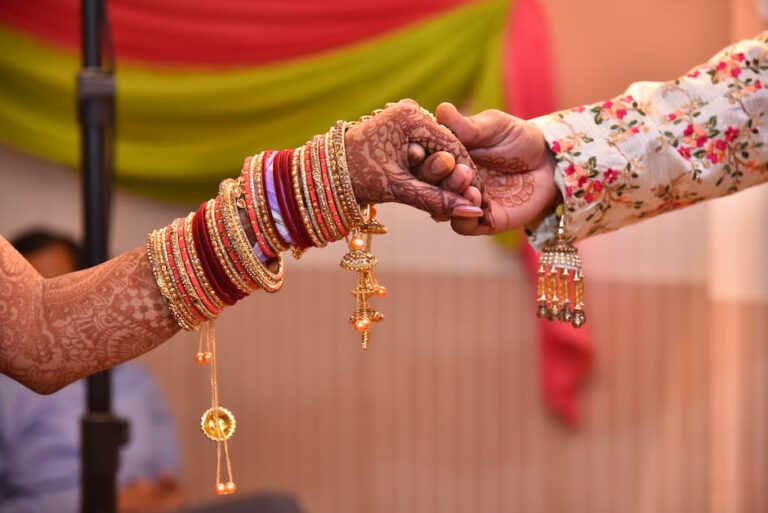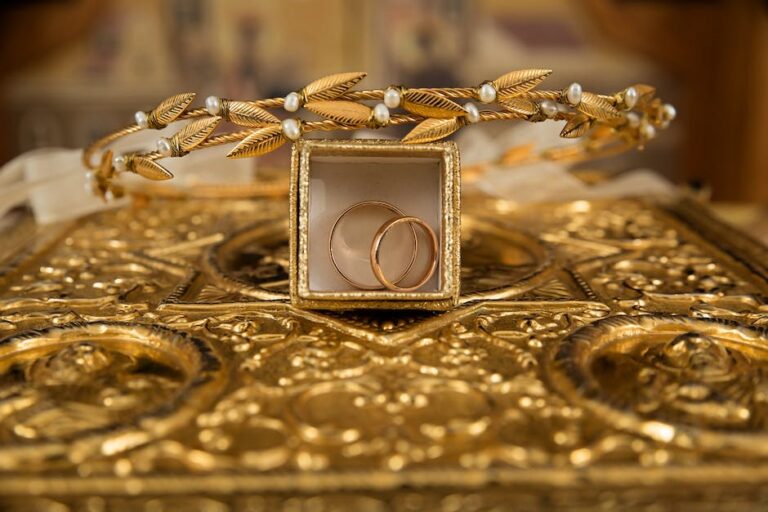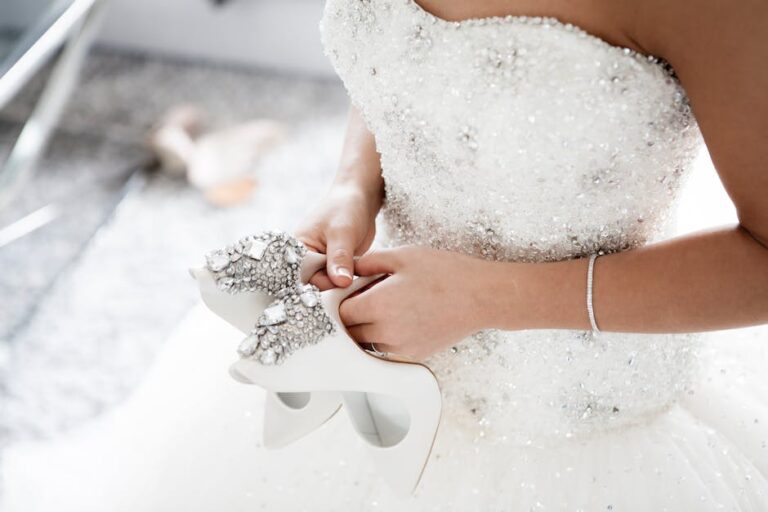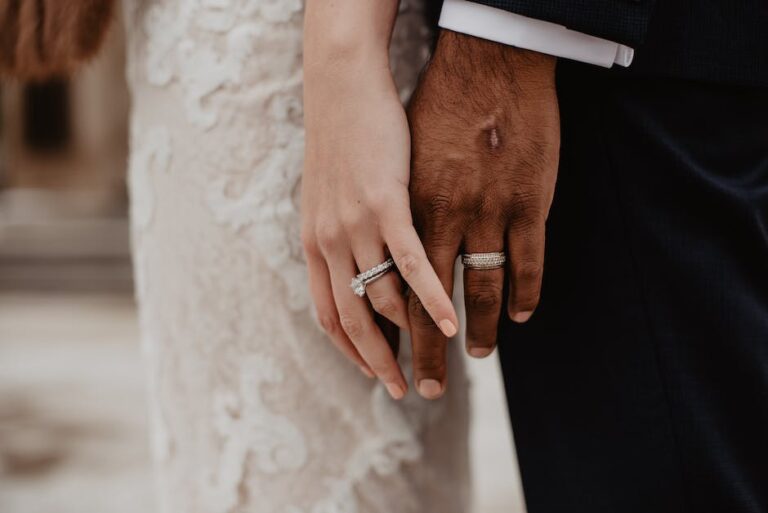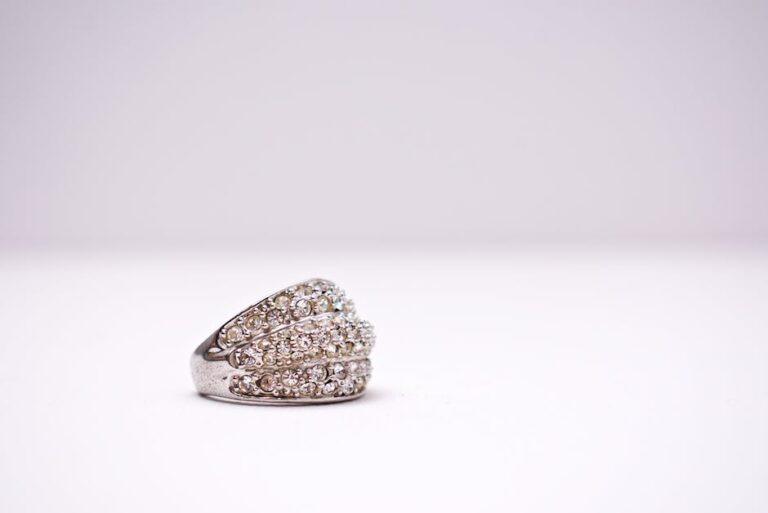Wedding Bands 101: Everything You Need to Know Before You Buy
The tradition of exchanging wedding bands dates back to ancient Egyptian times, where couples would exchange braided hemp or reed rings as a symbol of their love and commitment. The circular shape of the ring represented eternity, with no beginning or end, and the space in the center as a gateway to the unknown future.
The Romans also embraced wedding bands, using them as a token of ownership over their partner. Women typically received two rings – one made of iron to wear at home, and another made of gold to wear in public.
In the Middle Ages, the use of wedding bands became more widespread among the nobility. The rings were often adorned with precious stones and intricate designs, symbolizing the wealth and status of the couple.
In modern times, wedding bands have become an essential part of getting married in many cultures. The symbolism remains the same, with the circular shape representing eternity and the unending love between two individuals.
Metal Options: Which One is Right for You?
When it comes to choosing a metal for your wedding band, several options are available, each with its unique characteristics.
Gold is a classic choice, known for its durability and beauty. Pure gold is a soft metal, which is why most wedding bands are made of a gold alloy, with other metals added to increase its strength and durability. Yellow gold is the traditional option, but white gold and rose gold have also become popular in recent years.
Platinum is another popular choice, known for its strength and resistance to tarnishing. It is a naturally white metal, making it an excellent option for those who prefer a silver-colored band.
Palladium is a newer metal option, with similar properties to platinum but at a more affordable price point. It is also hypoallergenic, making it an excellent choice for those with sensitive skin.
Titanium is a lightweight, durable, and affordable option for wedding bands. It is also hypoallergenic and available in a range of colors, including silver, black, and blue.
Choosing the Perfect Diamond: Cut, Clarity, Carat, and Color
If you opt for a diamond wedding band, there are four essential factors to consider – the cut, clarity, carat, and color.
The cut of the diamond refers to its shape and how it is cut, affecting its overall brilliance and sparkle. The most popular diamond cuts for wedding bands are round, princess, and emerald.
Clarity refers to the presence of any blemishes or inclusions within the diamond. The fewer impurities, the higher the clarity grade.
Carat weight refers to the size of the diamond, with larger stones generally being more expensive.
Finally, the color of the diamond can also affect its value, with a colorless diamond being the most sought-after and valuable. However, some couples may prefer a colored diamond, such as yellow or pink, for a more unique and personalized wedding band.
Alternative Gemstones: Adding a Personal Touch to Your Ring
While diamonds are the traditional gemstone for wedding bands, there are plenty of alternative options for those seeking a more unique and personal touch.
Sapphires are a popular alternative, available in a range of colors and known for their durability and long-lasting beauty.
Emeralds, rubies, and other precious gemstones are also excellent options, each with their unique characteristics.
Non-traditional gemstones, such as moonstone, opal, and turquoise, are also becoming more popular for wedding bands, offering a distinctive and personalized look.
Matching or Mix-and-Match? Finding the Right Wedding Band Set
For many couples, finding the perfect wedding band set is essential, with the rings complementing each other and symbolizing their unity and love.
Matching sets feature identical designs and are often made of the same metal and gemstones, creating a cohesive and harmonious look.
Mix-and-match sets, on the other hand, offer a more individualized and unique look, with each partner choosing a wedding band that fits their personal style and preferences.
Factors to consider when choosing a wedding band set include the metal, gemstones, and design, as well as how well the rings fit together and complement one another.
His and Hers: Unisex Bands and Personalized Engravings
In recent years, the trend of unisex wedding bands has grown, with more couples opting for gender-neutral styles and designs.
Popular unisex options include simple, minimalist bands in metals such as gold, platinum, and titanium, as well as rings featuring unique designs or personalized engravings.
Engravings are an excellent way to add a personal touch to your wedding bands, with many couples choosing to engrave their initials, wedding date, or a meaningful quote or message on the inside or outside of the ring.
When choosing a wedding band, it is essential to consider your personal style and preferences, as well as the symbolism and meaning behind the ring. With so many options available, you are sure to find the perfect wedding band to celebrate your love and commitment to your partner.
Custom Design or Off-the-Shelf: Pros and Cons
When it comes to choosing a wedding band, you can either go with an off-the-shelf option or opt for a custom-designed ring.
Off-the-shelf options are readily available and often more affordable, with a range of styles and designs to choose from. However, they may not fit your specific preferences or needs.
Custom-designed rings offer the opportunity to create a one-of-a-kind piece that perfectly reflects your personality and style. However, they may take longer to produce and can be more expensive.
When deciding between a custom or off-the-shelf wedding band, consider your budget, timeframe, and personal style and preferences.
Care and Maintenance: Keeping Your Wedding Band Shiny and New
To keep your wedding band looking its best, regular care and maintenance are essential.
For metal bands, regularly clean with a soft cloth and warm water and avoid exposure to harsh chemicals such as chlorine.
Diamond bands should be cleaned regularly with mild soap and water or a diamond-specific cleaner, and avoid wearing your ring when performing activities that could cause damage, such as heavy lifting or manual labor.
It’s also essential to have your wedding band professionally inspected and cleaned every few years, and to consider adding insurance to protect against loss or damage.
By following proper care and maintenance techniques, your wedding band can last a lifetime, continuing to symbolize your love and commitment to your partner for years to come.


